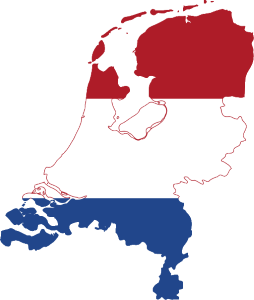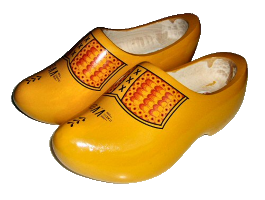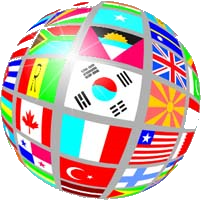The Netherlands -- School-age
Netherlands
Official Name: Kingdom of the Netherlands
Unofficially known as Holland
Government Type: Constitutional Monarchy
Capital: Amsterdam
County's inhabitants: Dutch
Abbreviation: NL
Currency: Euro
Official Language: Dutch
The West Frisian language is the official language in the northern province of Friesland
Population: 17,337,403 (2021)
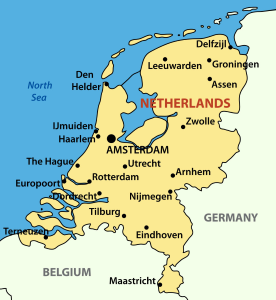
The Netherlands is in Western Europe. The North Sea is to the north and east. The Netherlands is between Belgium and Germany.
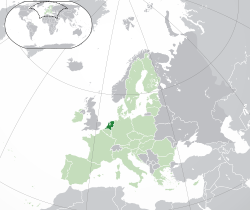
The Kingdom of the Netherlands
The Kingdom of the Netherlands consist of the Netherlands on the European continent, special municipalities and islands in the Caribbean.
The Kingdom of the Netherlands consist of four countries: Netherlands, Aruba, Curacao and Sint Maarten.
The special municipalities of the Netherlands: Bonaire, Saba and Saint Eustacious (called Caribbean Netherlands).
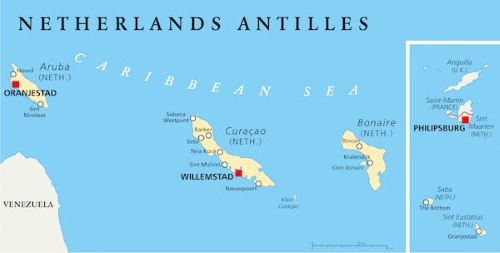
History
The Netherlands with no mountain ranges or natural borders has a history of battles and long wars with its neighbors. When the Romans took over the area starting in 57 BCE the Netherlands was inhibited by two Germanic tribes - the Batavians (inhabited the southern part) and the Frisians (inhabited coastal region). The Romans ruled over the Netherlands for 450 years building roads and towns.
They were overthrown by Germanic Tribes: the Franks, Angles, Jutes, and Saxon settle in the land. The Franks were the chief invaders and world rule during from the 4th to the 8th century. In 768 Charlemagne became King of the Franks and expanded his empire to include the Netherlands from the 8th to the 9th century.
From 800 to 1000 the Vikings arrived and raided towns and cities along the coast.
The Spanish ruled parts of the Netherlands for centuries and influenced the country by spreading Christianity. The Netherlands became the possessions of the powerful Hapsburg family. The Dutch would fight the Eighty Years' War and finally gained independence in 1648.
France under Napoleon would invade the Netherlands. Napoleon made his broth Louis king of the Netherlands later the Netherlands would be absorbed into the French Empire. The Netherlands would claim independence from France in 1814. For 25 years Belgium, Luxembourg, and the Netherlands would join together as one country called the Kingdom of the Netherlands. Belgium would break away forming its own country in 1839. Later Luxembourg would become an independent country in 1890.
During World War I the Netherlands remained neutral. When World War II began in 1940 the Netherlands tried to remain neutral. Germany would invade and occupy the Netherlands for five years. With thousands of Dutch deported to work in Germany and thousands were killed for resisting the Germans or trying to help the Dutch Jews.
After the war the Netherlands was a founding member of the European Economic Community (now the European Union) and the United Nations.
In 2002 The Euro replaced the Dutch guilder as the official currency of the Netherlands.
Flag of the Netherlands
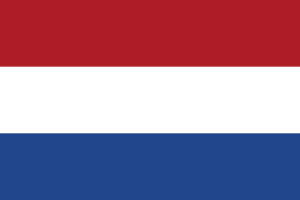
In the 16th century William I, prince of Orange joined with Dutch nationalist and became the leader of the independence movement against Spain. The Prince of Orange tricolor flag was orange, white, and blue and was the first flag adopted by the Dutch. The color red would replace the color orange. The red, white, and blue tricolor flag has flown since then in the Netherlands
Government of the Netherlands
The Netherlands is a Constitutional Monarchy. The prime minister of the Netherlands is the head of the executive branch of the Government of the Netherlands. The monarch is the head of government and appoints ministers who become part of the cabinet.
The Dutch parliament is called the States General. It has two houses. The Lower House has 150 members that are elected by the people every four years. The Upper House has 15 members that are elected by local councils for a four-year term.
Land
The climate in the Netherlands is wet with cool summers and mild winters
The Netherlands is a very densely populated country with over 17 million people. The population density of the Netherlands is 1044 people per square mile (412 people per square kilometer).
The Netherlands is one of the world's flattest countries. The land is mostly a flat and soggy bog with reclaimed land (polder) from the sea that is protected by dykes. Over half of the land is less than a few feet above sea level. The North Sea would have washed much of the land away if the Dutch had not built dams, canals, and dikes to protect the land. In the southeast you will find hills. Much of the non-developed land is covered by grass, which is used for grazing.
Animals
The Netherlands is crowded with people so animals make their homes around canals, dams, and dikes. The Netherlands marshes and wetlands are major migration stops for European birds.
Birds of the Netherlands pictures
A variety of fish live in the canals and estuaries. An interesting species that is common in the canals is the eel.
Small animals such as rabbits and muskrats are found in the countryside. Larger animals are found in the national parks and reserves.
Explorer
Dirk Hartog is a Dutch explorer who visited the Australian coastline in 1616.

